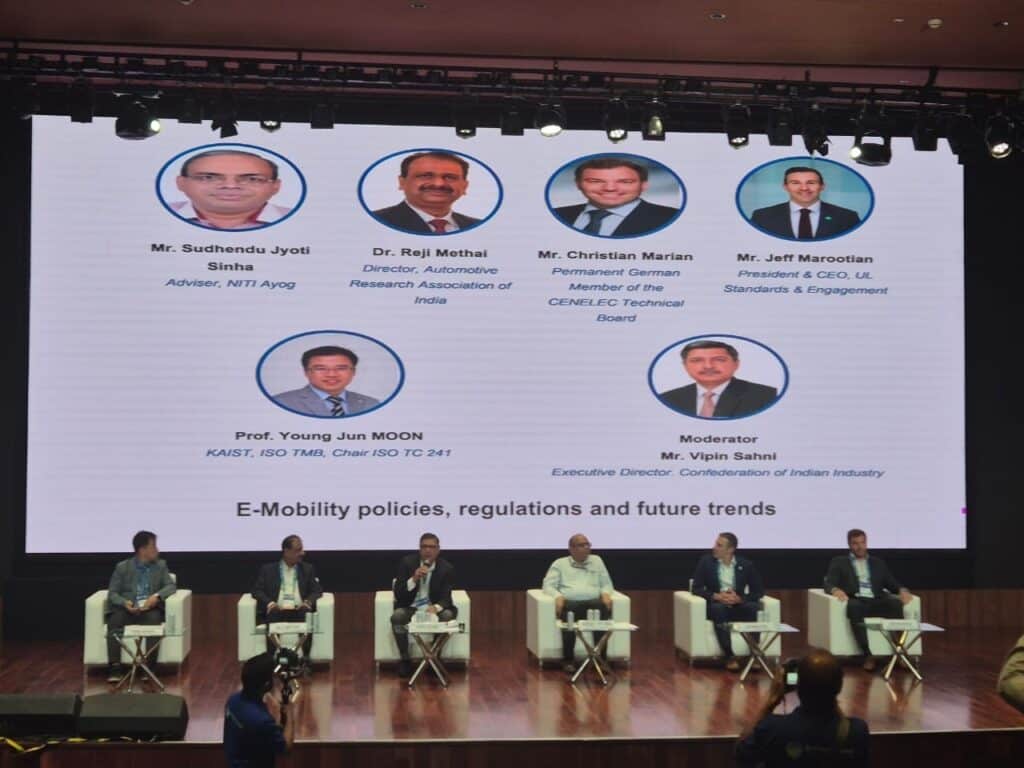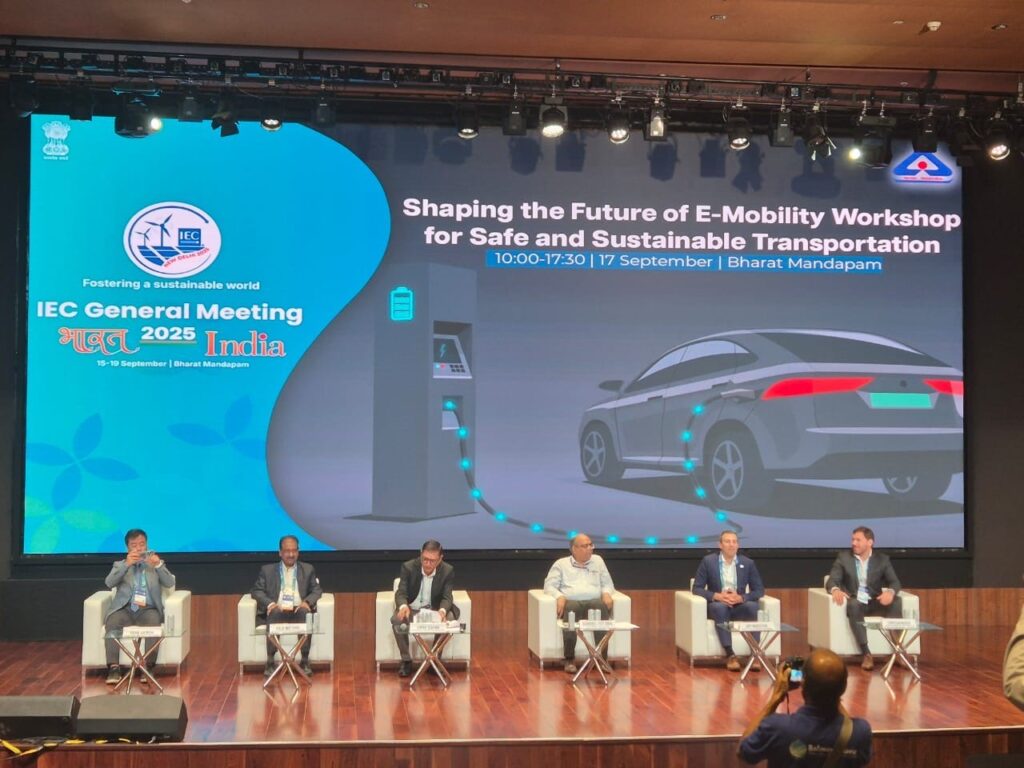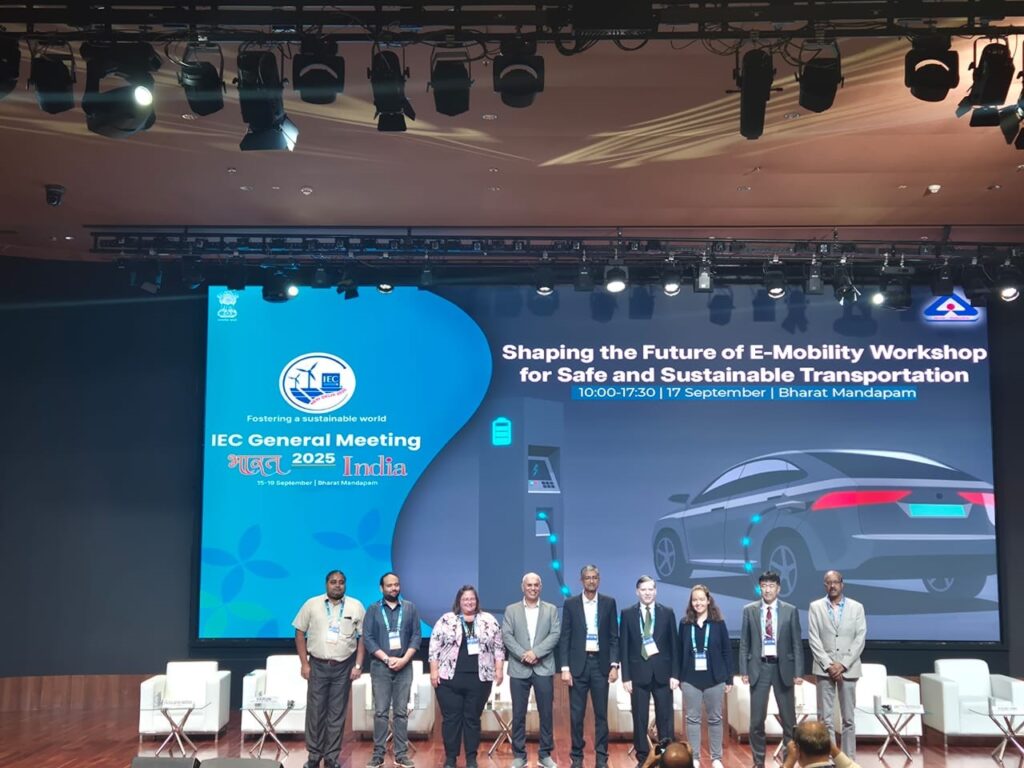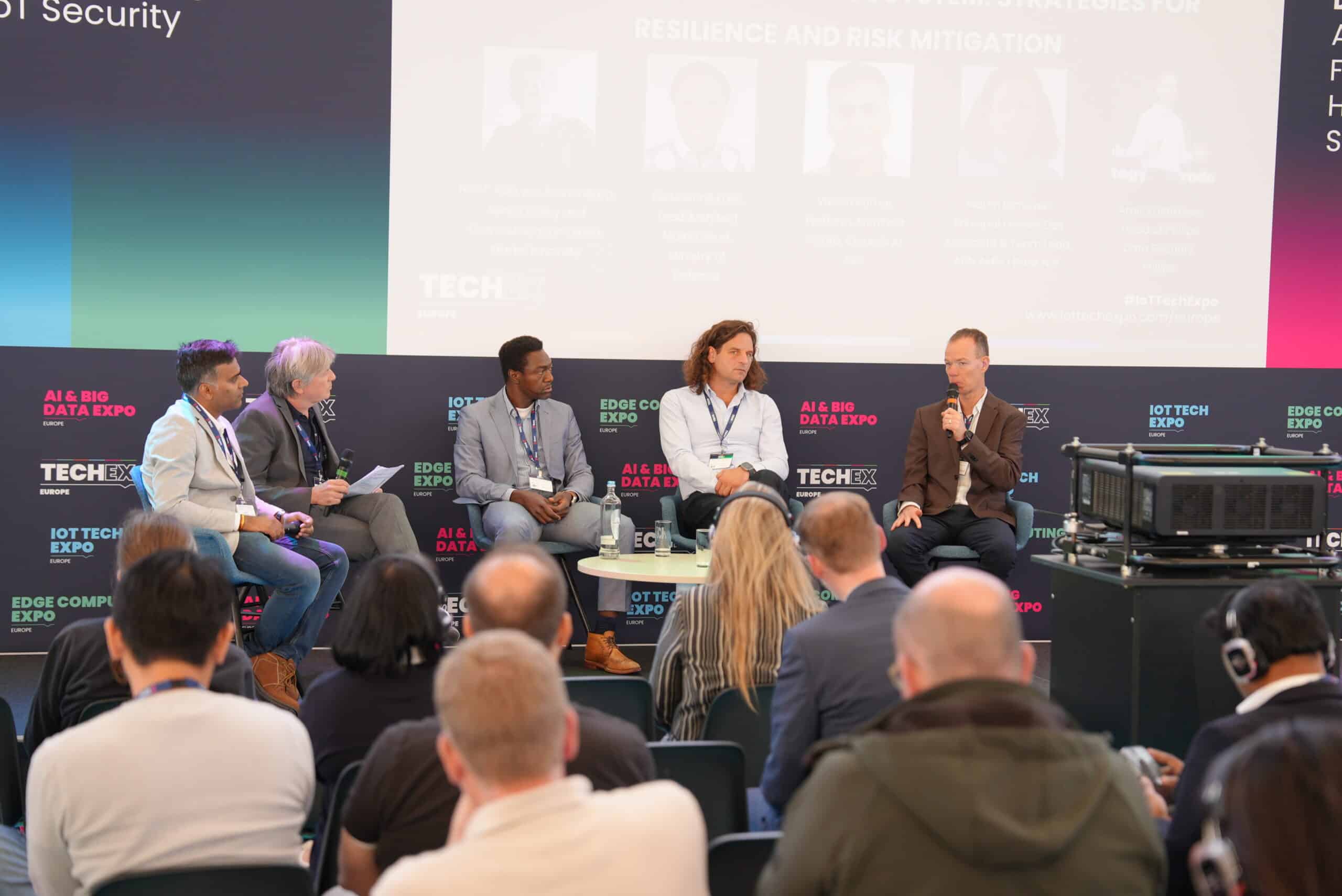
Alongside the IEC General Meeting 2025, Annette Frederiksen, CENELEC Board Member, and Christian Marian, Permanent Delegate to the CENELEC Technical Board, presented European policy, regulation, and standardisation in the evolving field of e-mobility, batteries, and ICT. The workshop was organised by the Bureau of Indian Standards (BIS).
Their participation was supported within the framework of the InDiCo-Global initiative, which fosters international cooperation on standardisation, innovation, and sustainable industrial development. India, as one of the world’s fastest-growing markets for mobility and digitalisation, is a key country in these global developments.

Panel Overview
The contributions were made in two complementary panels: “E-Mobility – Policies, Regulations, and Future Trends” and “Shaping the Future of Batteries: Innovations, Standardisation, and Sustainability.”
Panel 1: Christian Marian on Regulation and ICT
In the first panel, Christian Marian outlined how European regulation and standardisation interact in the field of e-mobility with a strong link to ICT. He emphasised the importance of the New Legislative Framework (NLF), which serves as the foundation of the EU’s regulatory approach by ensuring market surveillance, conformity assessment, and CE marking. Harmonised Standards (hENs) play a central role, as they provide a presumption of conformity once cited in the Official Journal of the European Union (OJEU). CEN, CENELEC, and ETSI contribute by developing European Standards (EN) that respond to legislative requirements and can be referenced in the OJEU.
Applying the “International First” principle, CENELEC seeks to adopt IEC standards wherever possible and adapt them only when necessary. This approach also applies to the EU Battery Regulation and the Alternative Fuels Infrastructure Regulation (AFIR), which together create a comprehensive framework linking product requirements, such as sustainability, safety, and circularity, with infrastructure deployment, including charging networks, communication protocols, and interoperability. Another key element is the Digital Product Passport (DPP), introduced under the broader Ecodesign for Sustainable Products Regulation (ESPR). For batteries, this takes the form of a sector-specific Battery Passport, which ensures lifecycle transparency, supports circularity, and strengthens traceability.
Digitalisation and sustainability are interconnected, making ICT and cybersecurity essential to the functioning of the DPP. Robust ICT standards are needed for interoperability, secure data exchange, and resilience against cyber threats. Cooperation with ETSI complements the work of CEN and CENELEC, particularly in areas such as communication protocols, trust services, and secure infrastructures. This alignment helps turn ambitious policy goals, such as achieving carbon neutrality by 2050, into technical solutions that enable innovation while ensuring legal compliance.
Panel 2: Annette Frederiksen on Batteries
The second panel, with contributions from Annette Frederiksen, focused on batteries and their role in sustainable mobility. She highlighted the significance of the EU Battery Regulation, published in 2023, which establishes a unified legal framework covering the entire lifecycle of batteries placed on the EU market. The regulation applies to five categories, including electric vehicles, industrial, portable, SLI (starting, lighting, ignition), and light means of transport (LMT), and places strong emphasis on sustainability and circular economy principles throughout production, use, and disposal.
Standardisation Requests (SReqs) ensure that new standards are developed when needed to support the regulation and provide a presumption of conformity. One key challenge is defining an effective division of responsibilities between legislation and standardisation while ensuring alignment with international frameworks.
A special focus was placed on e-bike batteries, which fall under the new LMT category. Electrification of mobility extends beyond electric vehicles, and in markets such as Germany, e-bike sales already outpace those of traditional bicycles. New standards are being developed for this category, addressing performance, durability, state of health, and expected lifetime. The forthcoming Battery Passport will be a cornerstone of this system, providing traceability and sustainability data. However, challenges remain: the EU is finalising guidance documents as well as delegated and implementing acts; several standardisation efforts are underway, and implementation timelines are tight. Building the ICT infrastructure for the Battery Passport also requires close cooperation between the three European Standards Organisations to ensure secure and trusted data frameworks.

Battery Safety and Standards
Battery safety was highlighted as a top priority. While existing standards such as EN 50604-1 in Europe and UL 2271 in the United States provide important frameworks, a new project at IEC level, IEC 63623-1, aims to create a harmonised global battery safety standard for light electric vehicles. This initiative is coordinated by a Joint Working Group bringing together experts from technical committees on batteries, e-bikes, and electric transporters. As e-bikes become more widely used, ensuring compliance with safety standards will be essential, along with raising consumer awareness about correct charging and handling practices.
Global Alignment Through Standards and Cooperation
The two European contributions at IEC GM 2025 emphasised that European regulation and standardisation are not inward-looking but are designed to foster international cooperation. India, with its rapidly expanding mobility sector, is a strategic partner for dialogue on interoperability, safety, and sustainability. For Europe, this means aligning technical standards with policy objectives while enabling innovation. For global partners, European approaches such as the Battery Passport and AFIR can serve as reference points, while mutual learning supports global interoperability.
The link between ICT and cybersecurity is particularly important, as cooperation between CENELEC, ETSI, and IEC ensures that digital infrastructures supporting e-mobility are not only interoperable, but also secure and resilient. In this way, the European contributions at the IEC GM 2025 E-Mobility Workshop illustrated how policy, regulation, and standardization converge — not just for the internal market, but as part of a global effort to advance sustainable, safe, and innovative mobility.





